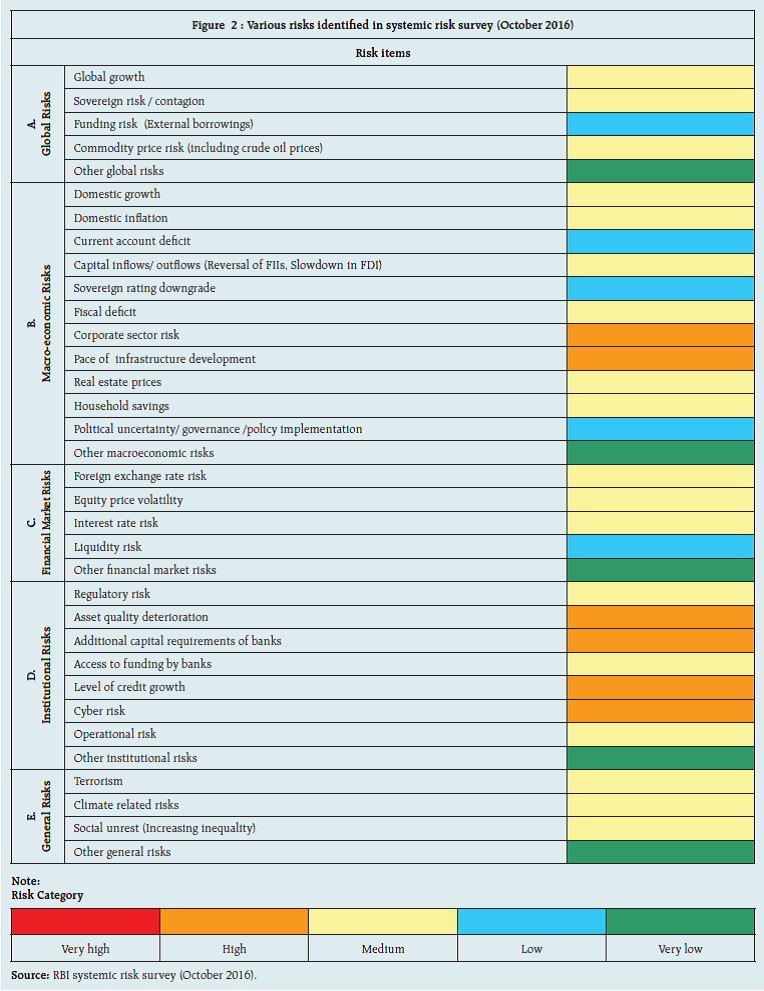Systemic Risk Survey The systemic risk survey (SRS), the eleventh in the series, was conducted during October-November 20161 to capture the perceptions of experts, including market participants, on the major risks presently faced by the financial system. According to the survey results global risks were perceived as medium risks affecting the financial system. The risk perception on macroeconomic conditions and institutional positions have been categorised in the medium risk category in the current survey. Market risks as well as general risks have been perceived to be in low risk category in this survey (Figure 1).  Within global risks, the risk on account of global growth, sovereign contagion and commodity prices were categorised as medium risk. Within the macroeconomic risks group, corporate sector risk and pace of infrastructure development were perceived to be in high risk category, while risk on account of domestic growth, domestic inflation, capital flows and household savings were considered to be in medium risk category in the current survey. The respondents have rated the foreign exchange risk, equity price volatility and interest rate risk in medium risk category as part of the financial market risks. Among the institutional risks, the asset quality of banks, risk on account of capital requirement, credit growth and cyber risk were perceived as high risk factors (Figure 2).  Majority of the participants in the current round of survey felt that the possibility of a high impact event occurring in the global financial system in the short term as well as in the medium term period is medium, while majority felt that possibility of occurrence of such event in the domestic financial system is low. Most respondents continued to be fairly confident in the global financial system, while there was a significant increase in the respondents in the current survey who reflected their high confidence in the Indian financial system (Chart 1). On the issue of likely changes in demand for credit in the next three months, the majority of the respondents were of the view that it might either increase marginally or remain unchanged. A majority of the respondents indicated that the average quality of credit would remain unchanged in the next three months, though, a number of respondents also perceived that it is likely to deteriorate (Chart 2).
|